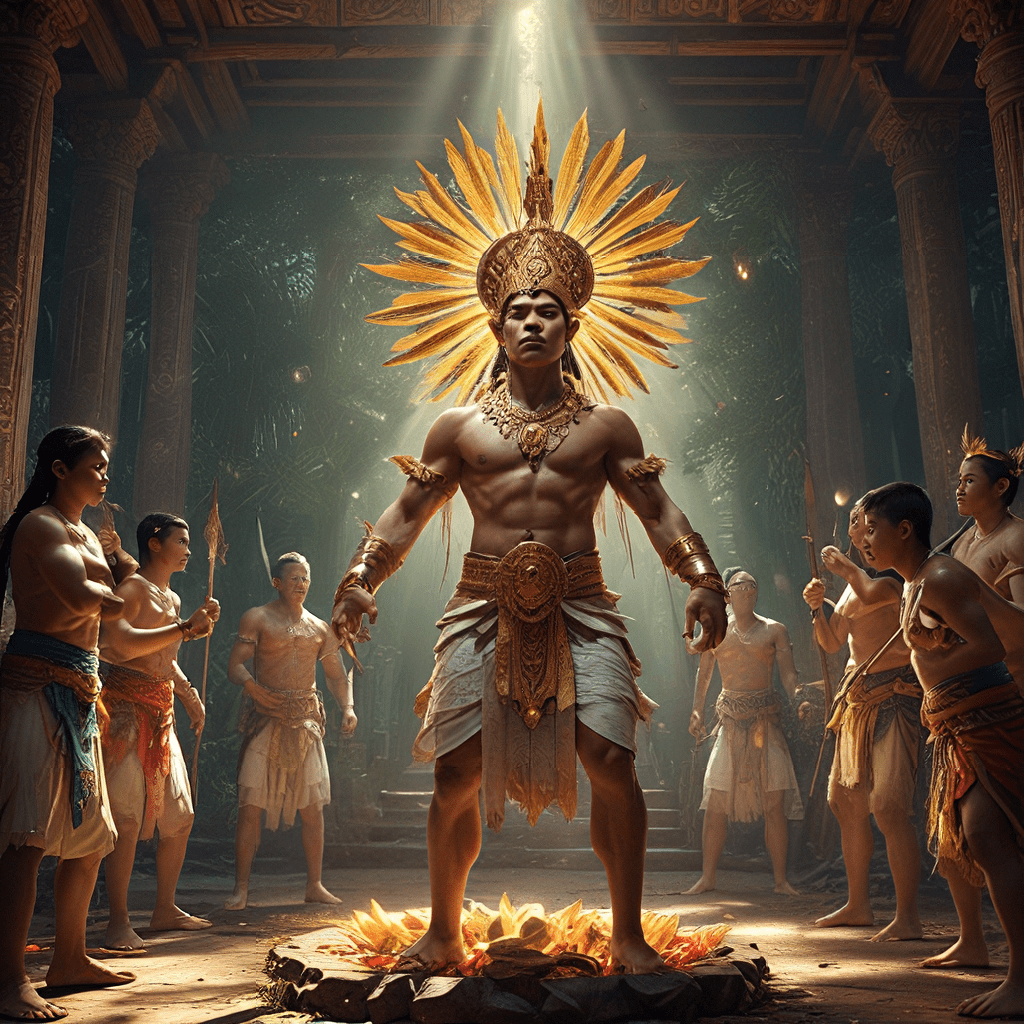Filipino Mythology: A Tapestry of Beliefs and Practices
The Philippines, an archipelago of over 7,000 islands, boasts a rich and vibrant cultural heritage steeped in captivating mythology. Filipino folklore is a intricate tapestry woven with tales of deities, spirits, and mythical creatures, each contributing to a complex and fascinating understanding of the world. These stories are not just entertaining narratives; they are also a reflection of the Filipino people's beliefs, values, and way of life. They offer insight into their deep connection with nature, the importance of community, and the reverence for ancestors.
The Role of Spirits and Ancestors in Filipino Folklore
At the heart of Filipino mythology lies the belief in the existence of supernatural beings, known as "engkanto," who inhabit the natural world alongside humans. These spirits vary in their nature and power, ranging from benevolent deities to mischievous tricksters and malevolent creatures. Some of the most prominent deities in Filipino mythology include Bathala, the supreme creator god, and the goddesses of fertility and harvests, Maria Makiling and Lakambini. These spirits play significant roles in Filipino folklore, influencing the lives of individuals and communities through their actions and interactions with humans.
Rituals and Ceremonies: Connecting with the Supernatural
In Filipino culture, rituals and ceremonies are not merely traditional practices; they are powerful tools for connecting with the supernatural realm. These rituals serve as bridges between the human world and the world of spirits, allowing people to communicate with and appease these beings, seeking their favor and protection. Through carefully choreographed movements, chants, offerings, and prayers, Filipinos engage in these rituals to honor their ancestors, appease the spirits, and seek their blessings.
Ancestral Veneration: Honoring the Spirits of the Departed
Ancestral veneration is central to Filipino culture. The belief that the spirits of the departed continue to watch over their living kin permeates many aspects of Filipino life. Ancestral spirits are believed to hold significant influence over the well-being of their families and communities. This reverence for ancestors is reflected in various rituals, such as "pamamangka," a ceremony performed to guide the soul of the deceased towards the afterlife, and "undas," a time dedicated to remembering and honoring the departed.
Pag-aalay: Offerings to the Gods and Spirits
Pag-aalay, which translates to "offering," is a key aspect of Filipino rituals. These offerings are seen as expressions of respect and gratitude towards the gods and spirits. They can take many forms, including food, flowers, incense, and even symbolic objects. The nature of the offering is dependent on the specific deity or spirit being honored. Through these offerings, Filipinos seek to establish a harmonious relationship with the supernatural world, ensuring their favor and protection.
The Significance of Rituals in Maintaining Harmony
Filipino rituals are not just about appeasing spirits; they are about maintaining harmonious balance in the world. This belief stems from the deep connection Filipinos have with nature and the interconnectedness of all living things. Rituals serve as a way to acknowledge and respect the power of the natural world and the spirits that inhabit it. By performing these rituals, Filipinos believe they can ensure the continued flow of good fortune, abundance, and protection for their communities.
Rituals for Healing and Protection
In times of illness, misfortune, or danger, Filipinos turn to rituals for healing and protection. These rituals often involve seeking the intervention of specific spirits or ancestors known for their healing abilities. One example is "panggagamot," a ritual practice that combines traditional medicine with spiritual healing. In this practice, healers utilize herbs, prayers, and rituals to address both physical and spiritual ailments. Another significant ritual is the "anting-anting," which involves the creation and use of amulets or charms believed to provide protection from evil spirits and misfortune. These rituals demonstrate the deep-seated belief in the power of the supernatural to influence human well-being.
Ceremonies for Life Cycle Events
Filipino rituals are woven into the fabric of life, marking significant milestones from birth to death. For example, "binyag," the baptism ceremony, is a sacred ritual that welcomes a newborn into the community and seeks divine protection for the child. "Kasal," the wedding ceremony, is a joyous occasion that celebrates the union of two individuals and seeks blessings for a long and happy marriage. Finally, "burial," the funeral ceremony, is a solemn ritual that honors the deceased and guides their soul towards the afterlife. Through these rituals, Filipinos acknowledge the cyclical nature of life and the importance of honoring the transitions that occur throughout a person's life.
Interpretations of Filipino Rituals: Anthropological Perspectives
Anthropologists have studied Filipino rituals extensively, offering valuable insights into their social and cultural significance. One key perspective is that rituals serve as a means of reinforcing social norms and values. They bring people together, strengthening community bonds and reaffirming shared beliefs. Rituals also provide a framework for understanding and interpreting the world, offering a sense of order and meaning in the face of uncertainty. By studying these rituals, anthropologists gain a deeper understanding of the Filipino worldview and the complex interplay between the spiritual and the material realms.
The Enduring Legacy of Filipino Mythology in Contemporary Society
Despite the influence of modern society, Filipino mythology continues to hold a powerful presence in contemporary culture. Elements of folklore are woven into everyday life, from folktales passed down through generations to the names given to children and the traditional practices observed during festivals. The enduring legacy of Filipino mythology is a testament to its ability to adapt and evolve over time, remaining relevant and meaningful to Filipinos across generations.
FAQ
What are some common Filipino spirits?
Some common Filipino spirits include the "kapre," a giant, cigar-smoking tree dweller, the "duwende," mischievous little creatures who live under the house, and the "aswang," vampires who feed on human blood.
What are some examples of Filipino rituals?
Some examples include "pamamanhikan," a courtship ritual where the groom's family asks for the bride's hand in marriage; "paglalaro ng patintero," a traditional game played during festivals, and "panunuluyan," a reenactment of the journey of Mary and Joseph seeking shelter.
How does Filipino mythology differ from other mythologies?
Filipino mythology is unique in its emphasis on the interconnectedness of nature, spirits, and humans. It also places a strong emphasis on ancestor veneration and the importance of family and community.
What are some ways Filipino mythology is reflected in contemporary culture?
Filipino mythology is reflected in contemporary culture through movies, TV shows, music, and literature. It also influences the design of buildings and the names of places.
What is the significance of Filipino mythology for understanding the Filipino people?
Filipino mythology provides a deep understanding of the Filipino worldview, their beliefs about the supernatural, and their values regarding family, community, and nature.
Is Filipino mythology still relevant in today's world?
Yes, Filipino mythology is still relevant. It offers a unique and valuable perspective on the world, and it continues to inform and inspire Filipino culture today.



